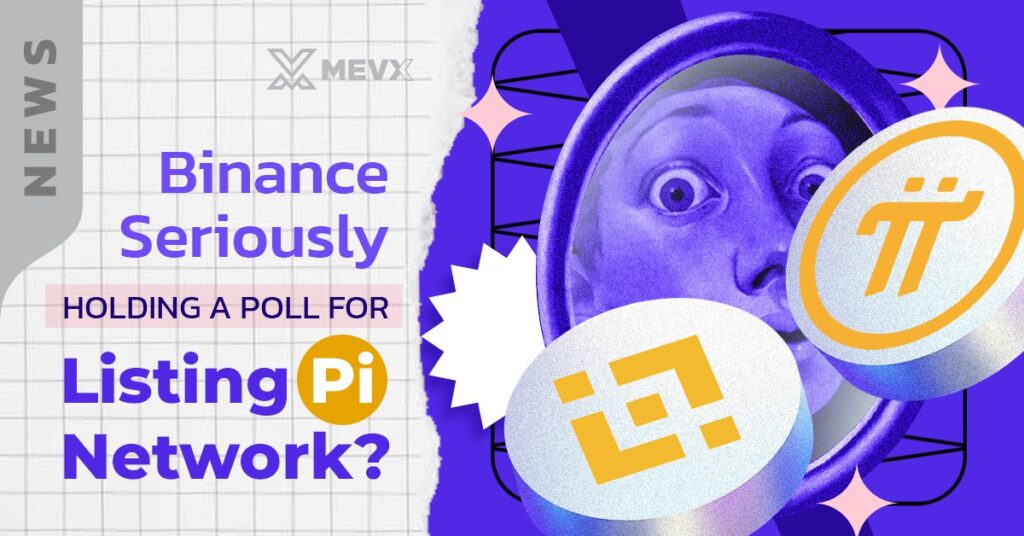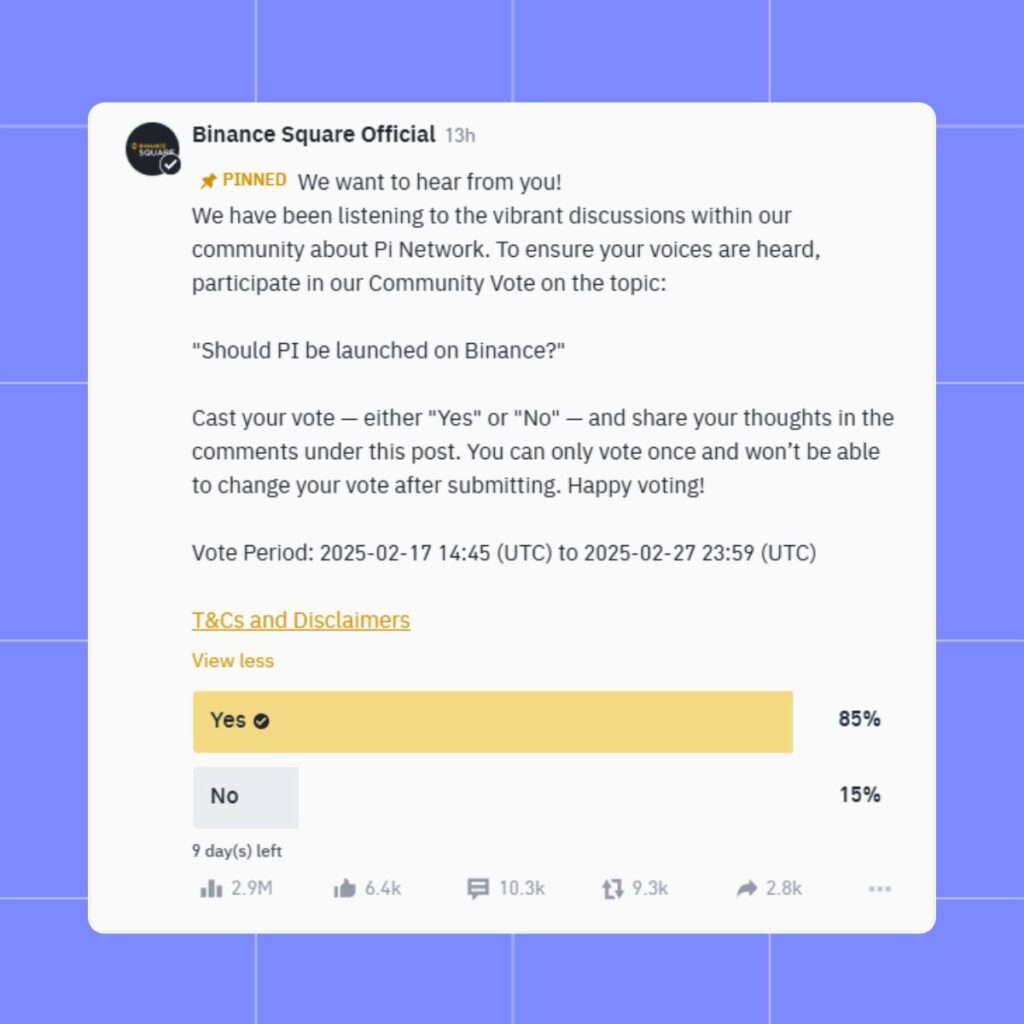In an unexpected turn of events, Binance, one of the world’s leading cryptocurrency exchanges, has opened a community vote regarding the listing of Pi Network’s cryptocurrency, Pi. As Pi Network gears up for its mainnet launch in February 2025, this decision has sparked a mix of excitement and skepticism within the crypto community.

Binance is Holding a Poll for Pi Network
Binance has launched a poll asking its users to decide whether Pi should be listed on their platform. The voting began on February 17, 2025, and is set to conclude on February 27, 2025, with an overwhelming 85% of votes currently in favor of listing Pi.

“We want to hear from you! We have been listening to the vibrant discussions within our community about Pi Network. To ensure your voices are heard, participate in our Community Vote on the topic: ‘Should PI be launched on Binance?'”
Pi Network Has Lots of Problems
Despite the enthusiasm surrounding its potential listing, Pi Network faces numerous challenges that critics argue could undermine its credibility and utility:

Inflation Risk from Tokenomics
With a total supply cap of 100 billion Pi coins, the distribution model is problematic. Mining rewards constitute 65% of the total supply, potentially leading to inflation if not managed post-mainnet. Ecosystem building funds are also under scrutiny for potential mismanagement.
Centralization Concerns
Pi Network’s governance is often criticized for being too centralized. The core team controls a significant portion of tokens, which could impact the network’s claim to decentralization, especially with undisclosed vesting schedules.
Utility and Adoption Challenges
Pi’s utility has been mostly limited to mobile mining without clear real-world applications. As of 2025, there’s a lack of robust dApps or merchant acceptance, casting doubt on its long-term utility.
Security and Scalability Issues
The network’s security at full scale remains untested, and past security concerns, including potential KYC vulnerabilities, have not been fully addressed.
Regulatory Uncertainty
Pi operates in a regulatory gray area in many countries, which might hinder its expansion or lead to conflicts with legal standards.
Market Manipulation Fears
With Pi’s large community, there’s a risk of market manipulation by early adopters or insiders holding significant token amounts.
Liquidity Pool Dilemma
The allocation of only 5% of the total supply to the liquidity pool seems insufficient, especially considering the dynamics of Pi’s distribution over the last six years. Since people have been mining Pi for this long, there’s a looming threat of a massive sell-off upon mainnet launch. With everyone eager to dump their tokens for profit, and potentially no one keen on buying due to doubts about Pi’s value, this could lead to a liquidity crisis. The small liquidity pool might not be able to handle such a volume, potentially causing dramatic price drops or even rendering the token valueless.
What is Wrong with This Poll by Binance?
The approach of using a community poll for a decision as significant as listing a cryptocurrency like Pi raises several red flags:
- Pre-Determined Outcome: Given Pi’s enthusiastic fan base, the poll feels more like a formality than a genuine democratic process.
- Evasion of Responsibility: Binance could use the community vote as a way to shift blame for any future fallout from listing Pi, claiming it was a “community-driven” decision rather than an expert evaluation.
- Misinformation Risk: With such polls, the results could be swayed by hype or misinformed endorsements, not necessarily reflecting a balanced view of Pi’s prospects or risks.
The Real Intention of Binance is for Fees?
One can’t help but be suspicious if Binance’s actual motive for listing could be money rather than enabling people. Listing Pi could lead to a trading volume boom, translating directly into more trading fees for Binance. The move is more of a cash-out on Pi’s bandwagon, even ahead of the longevity of the token and the overall stability of the market.
By engaging the individuals with this survey, Binance might be driving platform activity, but at what cost? There’s also the possibility this creates a precedent for a world where being on the list occurs because of popularity, rather than intrinsic value. That’s a means of prioritizing fees from revenue above the value of the cryptocurrency space and could be on the road toward a world where garbage tokens with very minimal actual use gain traction on quality systems.
This approach also puts Binance’s integrity into question. Does Binance prioritize chasing money more, where profitability becomes more of a goal rather than the ethical listing of crypto assets? If this is, then this can discredit the exchange’s status of being a destination for quality blockchain projects, rather than setting up for what and where it stands.
Conclusion
While Binance’s survey can be viewed to empower its user base, with possibly Pi Network on its roster causing extreme seriousness on the purity of being in the crypto space, technical and other factors of Pi Network suggest there must be a more stringent examination, not a poll, deciding such steps.
As the location for cryptocurrency development, the need for ethical practices of being listed with regard to future ramifications for the investors and for the stability of the market becomes increasingly significant.
Find more articles on the MevX Blog!
Share on Social Media:
